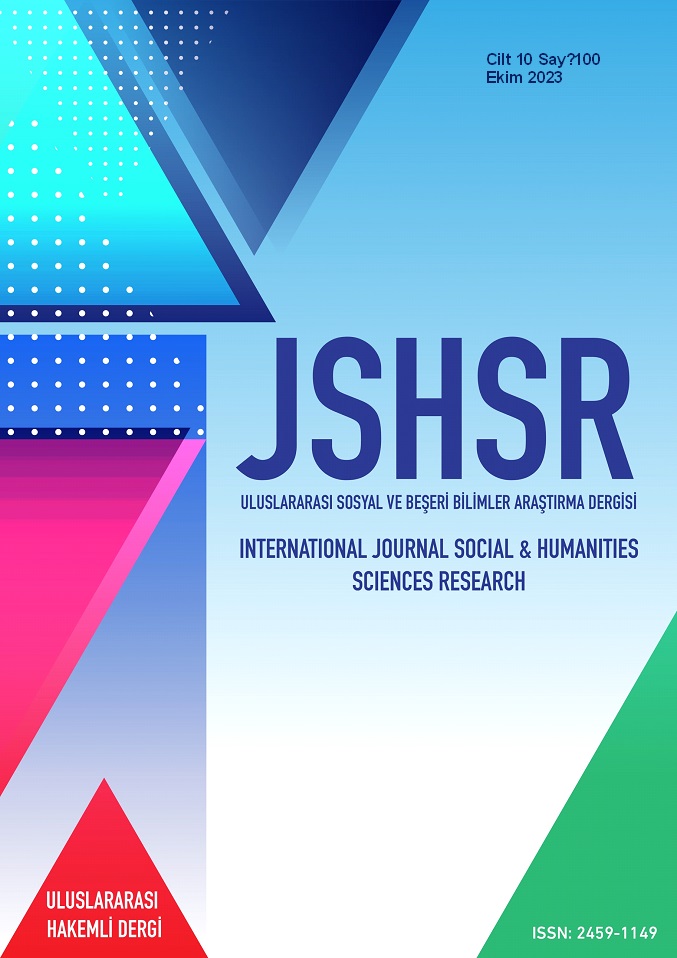Hans Hofmann’s Understanding of the Nature and Structure of Painting
DOI:
https://doi.org/10.5281/zenodo.10042358Keywords:
Hans Hofmann, Perception, Reality, Appearance, Push and PullAbstract
Hans Hofmann, a pioneering artist and educator who shaped American art, contributed to the development of the abstract expressionism movement by giving lectures in New York and Provincetown after Germany. He argues that the origin of art lies in nature and is inspired by nature. Hofmann abstracts the physical world entities and expresses them with basic shapes. While he associates his art with the energy and movement of nature, he sees each work of art as a subject expressed through sensory experiences. Hofmann taught art by teaching hundreds of his students and argued that the artist's specific talents were innate. The nature of materials and the use of tools determine the expression of works of art. Hofmann’s art is considered as a system in which color, form and movement influence each other. It focuses on the relationship between positive and negative surfaces and the importance of spaces in painting. The concept of push and pull emphasizes the interaction of pictorial elements with each other by shaping color and form, a basic principle that creates the depth and effect of painting. He establishes the relationship between art and metaphysical reality and argues that the painter expresses spiritual reality through sensory experiences. Hofmann’s understanding of art and his deep philosophical approach to nature, energy, color and relationship in painting inspire the artists who came after him.
References
Artbma (t.y.). Hans Hofmann, “Summer Night’s Bliss”, 1961. https://collection.artbma.org/objects/38055/ summer-nights-bliss
Artnet (t.y.). Hans Hofmann, “Submerged”, 1947. https://www.artnet.com/WebServices/images/ll00678ll d7KvGFgUNECfDrCWvaHBOcpPVD/hans-hofmann-submerged.jpg
Calisphere (t.y.). Hans Hofmann, “Combinable Wall I and II”, 1961. https://calisphere.org/item/ark:/130 30/tf9w1006v0/
Calisphere (t.y.). Hans Hofmann, “Agrigento”, 1961. https://calisphere.org/clip/500x500/9de3a80ff1e33b da 3d73a6878539a815
Chipp, H. B. (1968). Theories of modern art: A source book by artists and critics. University of California Press.
De Kooning, E. (1950). Hans Hofmann paints a picture. Art News, 48(10), 38-41, 58-59.
Friedel, H. & Dickey, T. (1998). Hans Hofmann. Manchester, VT: Hudson Hills.
Healy, P. (2003). Virgil Grotfeldt: Including the Series with Waldo Bien. Wienand. http://www.fiuamsterdam.com/Virgil%20Grotfeldt%20by%20Patrick%20Healy.pdf
Hofmann, H. (1956). The color problem in pure painting: Its creative origin. Arts and Architecture, 73(2), 14-15, 33-34.
Hofmann, H. (1967). Search for the real and other essays. (Ed. Sara T. Weeks-Bartlett. H. Hayes, Jr.). https://books.google.com.tr/books?id=D0YMPbdZWtAC&pg=PA59&hl=tr&source=gbs_toc_r&cad=2#v=onepage&q&f=false
Hofmann, H. (1987). Hans Hofmann’dan seçmeler (Çev. Can Ayan-Mehmet Ergüven). Gergedan.
Motherwell, R., Reinhardt, A., Siskind, A. & Karpel, B. (1951). Modern artists in America. New York: Wittenborn Schultz.
MurtualArt (t.y.). Hans Hofmann, “Fragrance”, 1956. https://www.mutualart.com/Artwork/Fragrance/ 4B203952258D326E
Pinterest (t.y.). Hans Hofmann, “Liebesbaum”, 1954. https://i.pinimg.com/originals/d7/b8/03/d7b8033a64 6d1ffc48f79a4d10f3275c.jpg
Seitz, W. C. (1963). Hans Hofmann with selected writings by the artist. The Museum of Modern Art: Distributed by Doubleday.
Downloads
Published
How to Cite
Issue
Section
License
Copyright (c) 2023 INTERNATIONAL JOURNAL OF SOCIAL HUMANITIES SCIENCES RESEARCH

This work is licensed under a Creative Commons Attribution 4.0 International License.


